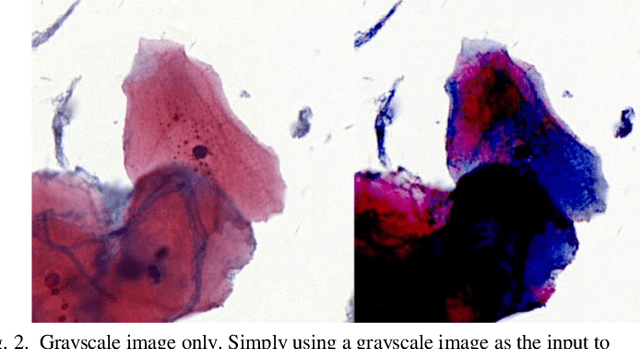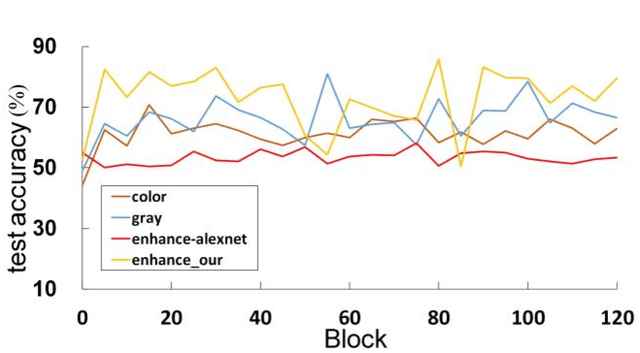Xihao Chen
Degradation-agnostic Correspondence from Resolution-asymmetric Stereo
Apr 04, 2022



Abstract:In this paper, we study the problem of stereo matching from a pair of images with different resolutions, e.g., those acquired with a tele-wide camera system. Due to the difficulty of obtaining ground-truth disparity labels in diverse real-world systems, we start from an unsupervised learning perspective. However, resolution asymmetry caused by unknown degradations between two views hinders the effectiveness of the generally assumed photometric consistency. To overcome this challenge, we propose to impose the consistency between two views in a feature space instead of the image space, named feature-metric consistency. Interestingly, we find that, although a stereo matching network trained with the photometric loss is not optimal, its feature extractor can produce degradation-agnostic and matching-specific features. These features can then be utilized to formulate a feature-metric loss to avoid the photometric inconsistency. Moreover, we introduce a self-boosting strategy to optimize the feature extractor progressively, which further strengthens the feature-metric consistency. Experiments on both simulated datasets with various degradations and a self-collected real-world dataset validate the superior performance of the proposed method over existing solutions.
Multi-stage domain adversarial style reconstruction for cytopathological image stain normalization
Sep 11, 2019



Abstract:The different stain styles of cytopathological images have a negative effect on the generalization ability of automated image analysis algorithms. This article proposes a new framework that normalizes the stain style for cytopathological images through a stain removal module and a multi-stage domain adversarial style reconstruction module. We convert colorful images into grayscale images with a color-encoding mask. Using the mask, reconstructed images retain their basic color without red and blue mixing, which is important for cytopathological image interpretation. The style reconstruction module consists of per-pixel regression with intradomain adversarial learning, inter-domain adversarial learning, and optional task-based refining. Per-pixel regression with intradomain adversarial learning establishes the generative network from the decolorized input to the reconstructed output. The interdomain adversarial learning further reduces the difference in stain style. The generation network can be optimized by combining it with the task network. Experimental results show that the proposed techniques help to optimize the generation network. The average accuracy increases from 75.41% to 84.79% after the intra-domain adversarial learning, and to 87.00% after interdomain adversarial learning. Under the guidance of the task network, the average accuracy rate reaches 89.58%. The proposed method achieves unsupervised stain normalization of cytopathological images, while preserving the cell structure, texture structure, and cell color properties of the image. This method overcomes the problem of generalizing the task models between different stain styles of cytopathological images.
 Add to Chrome
Add to Chrome Add to Firefox
Add to Firefox Add to Edge
Add to Edge